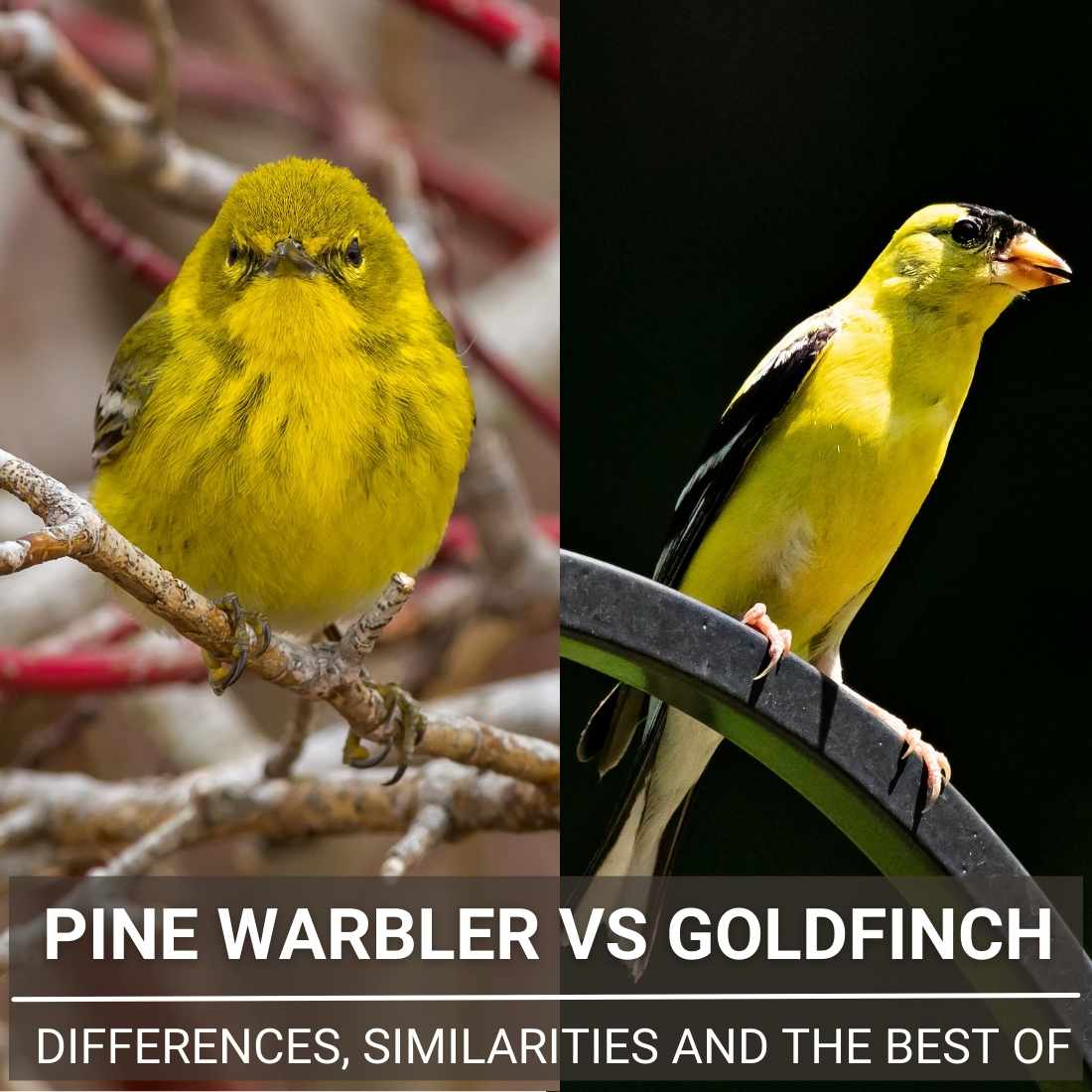The human eye frequently misses minute distinctions that differentiate one bird from another. Daily observers of flying birds are usually baffled by this optical illusion caused by the human eye. The Pine Warbler and the Goldfinch are two of the most commonly mistaken birds due to their similar appearance. The purpose of this post/article is to instruct human eyes on how to detect such minute distinctions and precisely identify the bird in front of them in order to develop into an expert birdwatcher!
Table of Contents
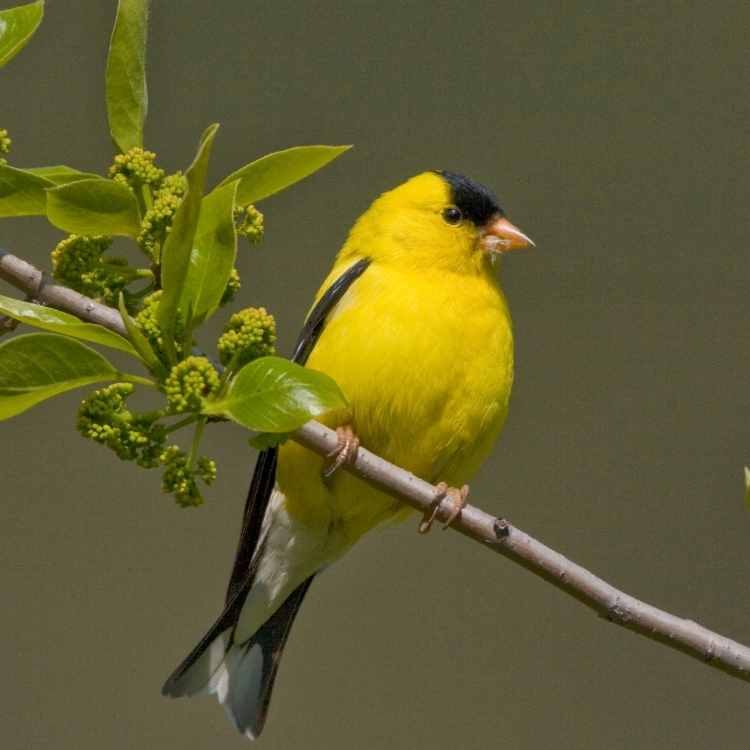
Differences between Pine Warbler vs Goldfinch
Pine Warblers are bulky, long-tailed warblers with strong bills that can be found in pine forests. A central notch is frequently visible at the tip of the tail, while Goldfinch is little finches with a short, conical beak and a small head, long wings, and a short, notched tail; they are also known as “golden finches.”
Even though both species have two noticeable white wing bars, which are the tips of the lesser and secondary covert feathers, the majority of the white on a goldfinch’s wing is actually on the tips and front edges of the primary feathers (the long flight feathers). Interestingly, the smaller coverts of mature male goldfinches are brilliant yellow in color and provide a golden “shoulder” impression. The Goldfinch’s rump and belly are predominantly white throughout the winter months.
The Pine Warbler and the Goldfinch both have white tail spots; however, the warbler’s spots are only on the two outermost tail feathers, while the Goldfinch’s spots are every tail feather.
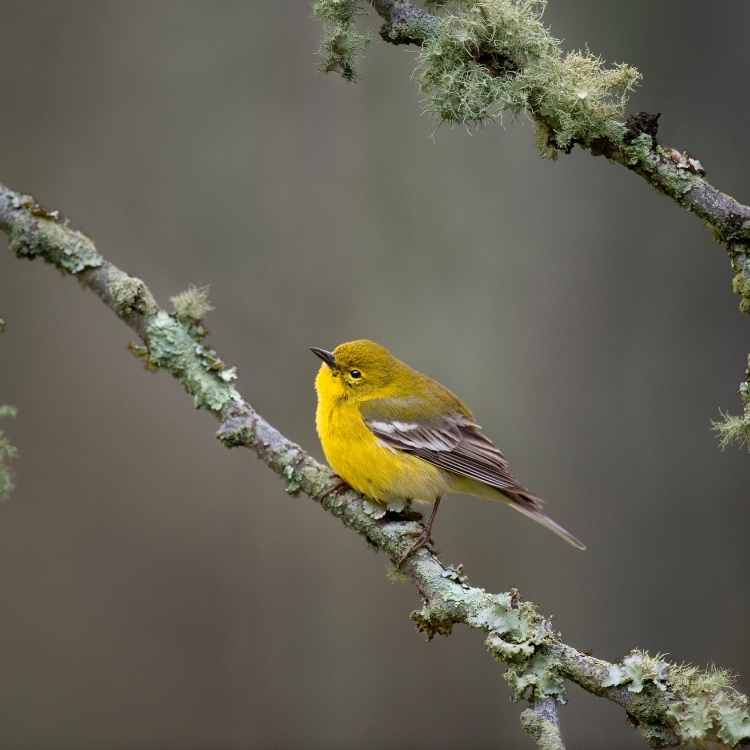
Pine Warblers are generally difficult to spot since they prefer to hang out in the upper reaches of pine trees. The majority of their food consists of insects, although they also consume fruits and seeds. They will graze on the ground or visit the feeders in between feedings. Males sing from the tops of pine trees in steady, rich trills. On the other hand, Goldfinches are energetic and acrobatic tiny finches that cling to weeds and seed stockings and who occasionally mill about in big groups at feeders. Goldfinches fly in a bouncing, undulating pattern, and they frequently call while in flight, attracting the attention of observers.
Pine Warblers get their name from the fact that they spend most of their time on pine trees. This can flourish in pine forests or deciduous woodlands with a mix of pine trees, depending on the environment. They can be found in similar environments during the winter, but they usually visit backyards and bird feeders, where they consume seeds and suet. However, the Goldfinch’s primary natural habitats are weedy fields and floodplains, where large numbers of vegetation such as thistles and asters may be found. These beautiful birds can also be found in agricultural regions, along with roadside ditches, orchards, and people’s yards. Goldfinches can be seen at feeders at any time of year, although they are most abundant during the winter months.
Some other notable differences in Pine Warbler vs Goldfinch
| Pine Warbler | Goldfinch |
|---|---|
| Feathers are not as showy | Feathers are showy |
| Greenish-yellow coloration | Bright, brilliant yellow coloration |
| Pine warblers prefer seeds on the earth or insects from shrubs and trees rather than flowers and fruits. | Goldfinches are highly sociable birds that eat from backyard feeders. |
| Pine Warblers migrate in the spring to avoid the cold temperatures of the winter and then return in the fall to breed for the season. | They seldom migrate. Only migrate when the weather is too harsh |
| More prevalent in North America | Usually found in the USA and some parts of Canada |
| A slender pointed beak | Conical beak |
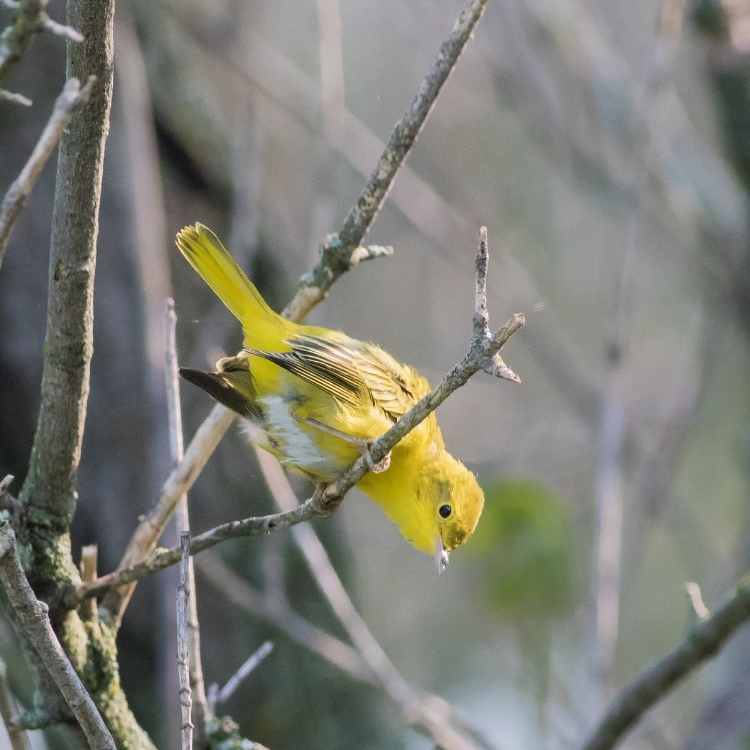
Similarities between Pine Warbler vs Goldfinch
With its basic yellowish tinge, black wings, and white wing bars, the Pine Warbler’s winter plumage appeared to be similar to that of a Goldfinch.
In addition, both the Pine Warbler and the Goldfinch are songbirds, and they also have white spots on their tail wings. They both have wonderful voices and catchy music. Both bird species are extremely tiny, and people adore them.
Interesting facts about Pine Warblers
The Pine Warbler is the only warbler that consumes a high volume of seeds, especially pine seeds. Due to this seed-eating skill, Pine Warblers occasionally visit bird feeders, unlike almost all other warblers. In winter, migrant Pine Warblers from the northern US areas migrate to the southern United States to join resident Pine Warblers.
Other interesting facts
- Individual Pine Warblers can exhibit physical differences depending on their diets: birds fed mostly seeds grew larger gizzards (the organ that breaks food into pieces) and needed longer digestion times, while birds have given fruit developed longer intestines and required less time to digest.
- They may form big flocks of 50 to 100 or more birds.
- The oldest Pine Warbler ever reported was a female who was at least seven years, ten months old, when she was recovered and re-released in Florida in 2013.
Here you can check all Pine Warbler sounds
Interesting facts about the Goldfinch
Goldfinches migrate south in the winter, following a pattern that appears to correspond to places with an average minimum January temperature of fewer than 0 degrees Fahrenheit. American Goldfinches are unique among goldfinches in that they molt their body feathers twice a year, in late winter and late summer. Each spring, the male goldfinches’ brighter golden coloration is a welcome sign of the upcoming warm months. American Goldfinches breed later than the majority of birds in North America.
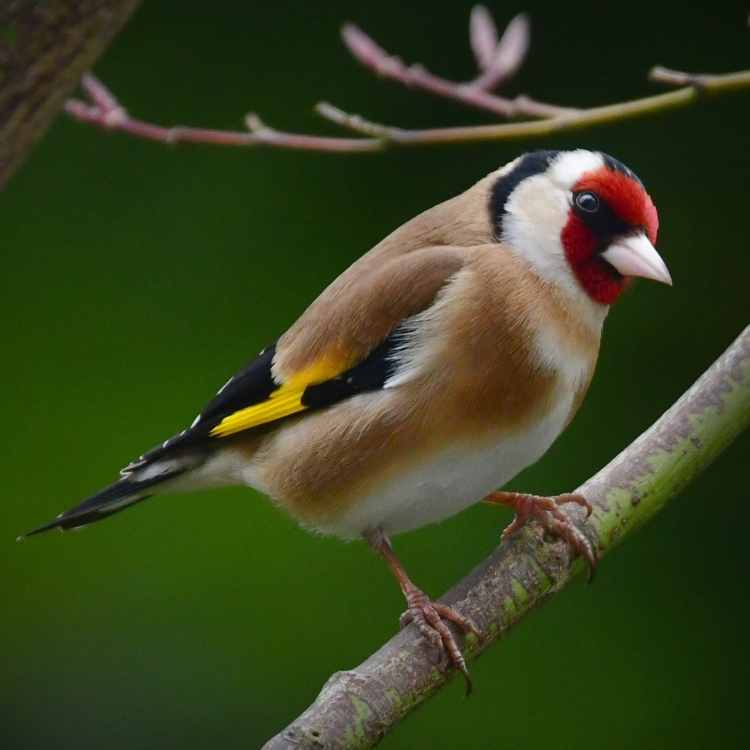
Other Goldfinch Facts
- Goldfinches in pairs emit nearly identical flight sounds; goldfinches may use these calls to differentiate members of distinct pairings.
- They wait until June or July to nest, when milkweed, thistle, and other plants produce fibrous seeds, which goldfinches integrate into their nests and feed their young.
- The oldest known American Goldfinch lived to be ten years and nine months old.
- Also, check our blog post about the spiritual and cultural meaning of the Goldfinch.
Here you can check all Goldfinch sounds
Final Verdict
We can say that both Pine Warblers and Goldfinches are beautiful little birds with beautiful voices. Pine warblers have greenish-yellow coloration and slender pointed beaks, while Goldfinches have brilliant yellow coloration and conical beaks. Additionally, both these birds have white spots on their tails.
In case you are into birds with yellow plumage, check out our post: list of yellow birds or further posts about finches: Finch vs Sparrow, Finch Symbolism and Spiritual Meaning, Goldfinch Meaning.
